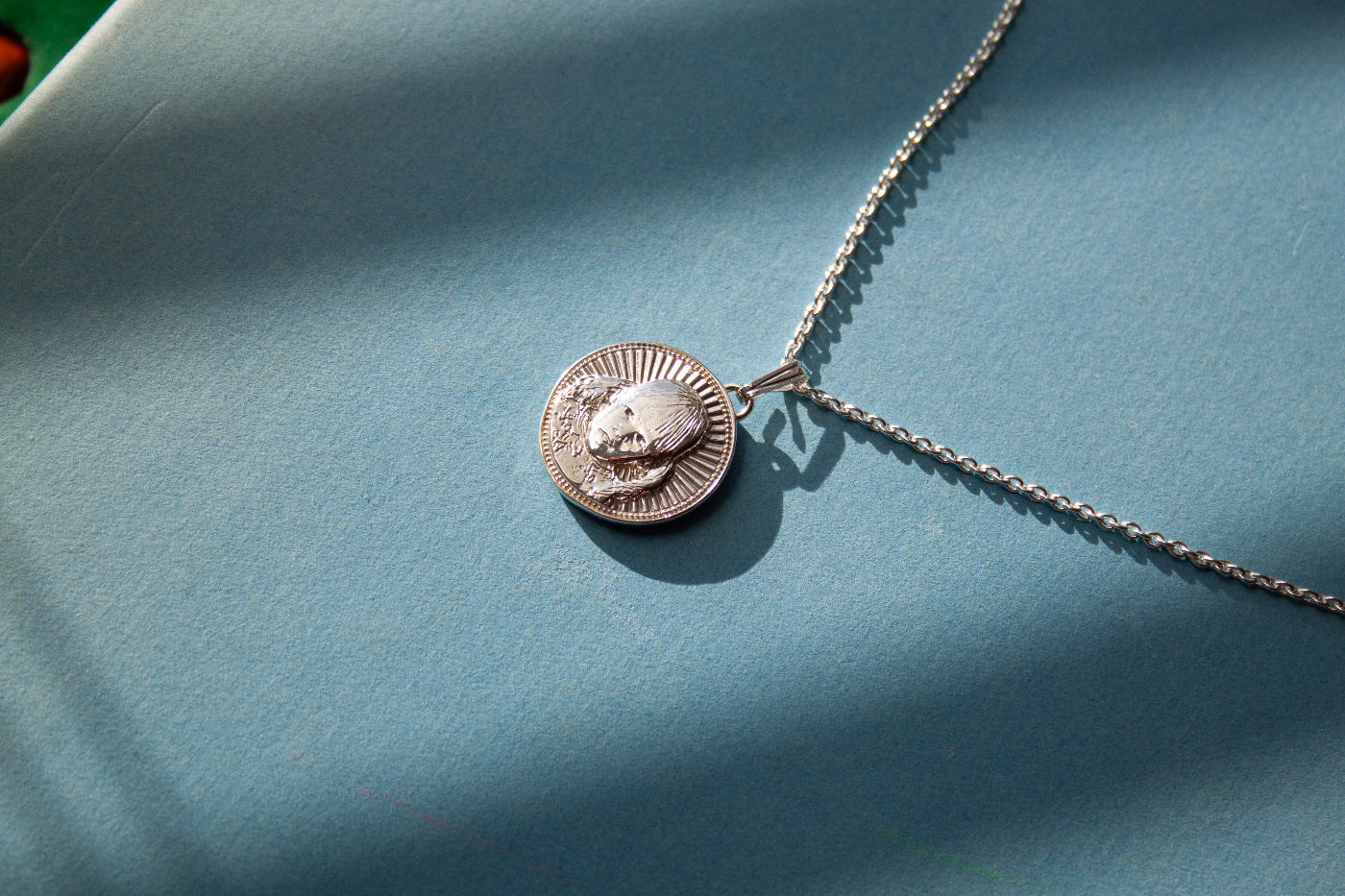When shopping for jewelry, it’s easy to get seduced by words that sound luxurious — "gold vermeil," "waterproof," "sweatproof," "plated with 18k gold." But much of this is smoke and mirrors. Behind these appealing terms, many brands hide products that are cheap to make, quick to tarnish, and ultimately destined for the landfill. Let’s break down what these buzzwords really mean, and why you should be skeptical.
“Gold” — but read the fine print
Example of brands misleading with "Gold" and "Premium" written everywhere, until you dive really deep into the details. Here they even write "plated with 18K solid gold", which is completely meaningless.






Gold Plated
Let’s start with the most common offender: gold-plated jewelry.
At first glance, “gold plated” sounds great. It contains real gold, right? Technically, yes. But only in the thinnest, most microscopic layer. Underneath that whisper of gold is usually a cheaper base metal like low quality brass — a material that reacts with air, water, and your skin over time.
After a few wears, the gold layer wears off, exposing the base metal. That’s when your necklace starts turning green, your fingers start itching, and your “affordable luxury” piece ends up in the trash.
PVD
Faucets with different colors of ZrCN PVD platings. Notice it's possible to make different shades of gold with this process.

PVD (Physical Vapor Deposition) is a modern plating technique. A common trick is to first deposit a hard and wear extremely wear resistant gold-colored zirconium carbonitride (ZrCN) PVD coating, which mimics the look of gold or rose gold but contains no precious metal. This layer is extremely hard and durable. In some cases, a microscopic layer of real gold is applied on top to be able to market it as "18K gold" and give the illusion of authenticity. The real gold wears off quickly with use, leaving only the hard sturdy gold colored ZrCN layer beneath. And since that is very corrosion resistant the brands have no trouble giving life-time guarantees, because it can be hard to see when the real gold is worn off.
Gold Vermeil: A Legal Loophole

Gold vermeil is often marketed as a high-end alternative to gold-plated jewelry. And yes, it has slightly stricter requirements. In the U.S., for something to be labeled “vermeil,” it must have:
- A base of sterling silver
- A gold layer that’s at least 2.5 microns thick
But here’s the catch: 2.5 microns is still paper-thin. It’s better than most gold-plated jewelry (which can be less than 0.5 microns), but it’s not even close to solid gold. Over time, even vermeil wears down — especially on rings and bracelets that rub against surfaces constantly.
Many consumers think they’re buying a lasting piece of gold jewelry, when in reality they’re just buying a slightly better version of plating.
For more on plating/vermeil and precious metals see our Materials Guide.
Waterproof and Sweatproof? Not Really.
“Waterproof” and “sweatproof” are common buzzwords in jewelry ads — especially for gold-plated and vermeil pieces. But these claims are often completely meaningless. Read more about this in our article on waterproof jewelry.
- Gold plating wears off faster when exposed to water, sweat, perfumes, and lotions.
- Even vermeil can tarnish or degrade when it comes into contact with moisture or acidic skin.
- “Waterproof” has no legal definition in jewelry — it's just a marketing term designed to give you false peace of mind. Nothing is waterproof by the way. Especially don't wear you jewelry in chlorinated pools. Chlorine makes gold and silver brittle, so it is more likely to break apart.
- PVD Zirconium Carbonitride coatings as described above is very resistant to sweat, and every kind of water, so if you want "gold colored" go for something like that.
Some brands even advertise premium/sweatproof/waterproof, but then advise customers to “avoid water, sweat, and contact with skin” in the care instructions — directly contradicting their own words.
The Sustainability Illusion
Many of these Social Media brands wrap themselves in the language of sustainability — offering “ethical” or “eco-friendly” alternatives to fast fashion. But if your jewelry only lasts a year (or less), how sustainable is it really?
Disposable jewelry — no matter how it’s packaged — is still mass-produced waste. Real sustainability comes from investing in solid, timeless materials that last decades, not seasons. Read more about the green washing in the industry in our article A Word On Sustainability.
What Should You Look For Instead?
The jewelry industry thrives on confusion. By using impressive-sounding terms and making misleading claims, many brands lure customers into overpaying for products that won’t last. Understanding what you’re actually buying — and what those shiny words really mean — helps you make smarter, more sustainable choices.
If you’re tired of throwing away jewelry every year, start asking tougher questions. You deserve better than clever marketing and a gold-plated illusion.
If you want jewelry that lasts, look for:
- Price: if it's too cheap, it's not gold. The gold usually costs more than $100 for any piece. A signet ring is +$500, a necklace with a pendant +$300, etc.Exceptions to this are small ear stickers or similar. Current gold prices (June 2025) are around $110 per gram.
- Silver is quite cheap: a simple ring will only cost a few bucks in material, signet rings can cost +$20.
- Solid gold (not plated) — 10k, 14k, 18k depending on your budget
- Solid sterling silver — ideally not plated with anything at all
- Clear product descriptions — lookout for vague language!
- Transparency about materials — brands that proudly say “100% solid gold” don’t hide behind fancy terms
Yes, solid gold is more expensive upfront. But it doesn’t tarnish, it’s hypoallergenic, and it holds real value over time. It’s not just a purchase — it’s an heirloom.

